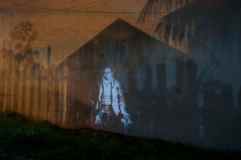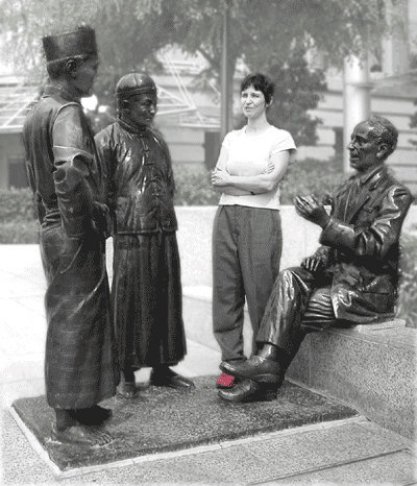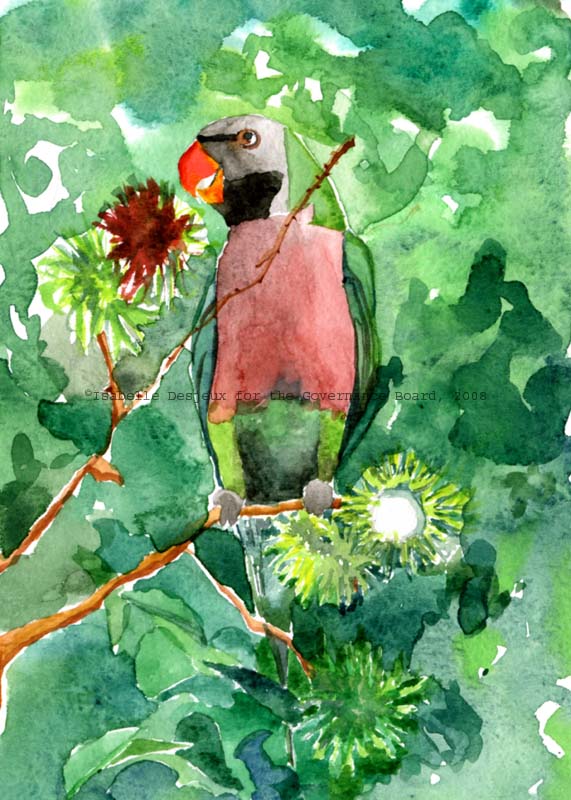Buang, the Lost Malay Scientist
* I presented my work as part of a panel discussion entitled “I Am Ali Wallace” in Singapore on Wednesday 13th of May 2015 at Gallery Steph. The panel included Artist Fyerool Darma, Historian of Science John Van Wyhe, and Professor of literature Philip Holden. Click here for more info on the event and here for the full video of the presentation.*
Buang Bin Mohamed Ali was Alfred Russel Wallace’s companion during some of his travels in the Malay Archipellago. Not very much is known about him, apart from the information given by Wallace himself in his books, “The Malay Archipelago” and “My Life”.
The boy met Wallace in the mid-1800s in Sarawak and lived till the early 1900s in Ternate.
It is a mystery how such a brilliant mind can have remained unknown from the western world and more particularly the scientific world for all these years. The project developing here aims to find out exactly what the causes of him remaining unknown can be.
Part of the project include a 6-minute film, some artifacts that could have belonged to the man, and a trip to Ternate to find out what has happened to him, his family, and find out who knows anything about him.
Pictures below belong to the project, which is on-going since 2010.
























I’m rather curious as to the name ‘Buang Bin Mohamed Ali’ as Wallace mentioned only ‘Ali’ in his books. May I know how this name (Buang Bin Mohamed Ali) comes about? If this is his real name, then according to Malay naming system, his given name should be ‘Buang’ and his father’s name, Mohamed Ali, separated by the word ‘Bin’. Apparently, while seeing an American naturalist later in his life, he introduced himself as ‘Ali Wallace’.
I think because it is quite common for the British to call others by their surname. For the Malays, we have our name and “bin” or in english it means son of and our father name.
We don’t know his real name. He calls himself “Ali Wallace” later in life possibly only when introducing himself to the foreign naturalist visiting – i would’t think that is his “real” name either or rather he would have different names depending on the context, or who is asking.
He probably refers himself as ‘Ali Wallace’ to mentioned who he works with for easy recognition, or that’s how he advertises himself.
Thanks for your reply, Isabelle. May I ask is this a fictional creation about Ali, or something ‘discovered’ through research on hitherto unknown historical materials?
All the official historical facts about Ali can be found here: http://wallace-online.org
And Dr John van Wyhe will be publishing a detailed account of all that is known about him soon – I will be publishing the link then so that you may follow the little that history has uncovered.
My own research concerns the fact that a lot of scientists do not get heard because they are located at the wrong place, at the wrong time, don’t come from the right culture and don’t speak the right language. So, all of Ali’s achievements as I have described them here are reconstitutions of what I believe he might have really discovered but remained hidden because of circumstances.
So, all this (name, notebook…) are fictional?
Are historical reconstructions fictional? Then yes. I am glad this character is bringing up all this discussion. I will be explaining more on the project in my blog soon to clarify.
@ Ah Tshen – Why are you so obsessed with that word of “Fictional”; can’t you just accept that this guy a Malay man could be an unknown, unreported established scientist of his time? The explanations given by Isabelle Desjeux are so explicit enough and even some others provided extra notes. This Malay Bugis scientific work either you like it or not from Sarawak is just victim of circumstantial factors i.e language, time and exposure to a wider audience. This is a very good and honourable work as to restore some historical facts about someone who contributed highly to society and his country. Thanks Isabelle Desjeux
Good job Isabelle.
Successful scientists normally get helps of assistance from great persons. And very often their name are not written and forgotten.
Hi Isabelle
About the gentleman interviewed in that trailer, is that in Ternate? If so, I’m curious as to why he’s speaking in perfect Malay rather than indonesian!?
Well spotted – although i wouldn’t call his Malay “perfect”. Have you been to Ternate?
I have the same question too since he is definitely speaking in localised Malay and not the Indonesian language.
The Samsudin in the documentary seems out of place. His accent is definitely not Ternate but Singaporean.
Yes, I have been to many corners of Indonesia but that plump man supposedly from Ternate is speaking in Malay in Singapore slang not Indonesian. Even in Pulau Siantan, the malays speak in Terengganu Malay slang due to their proximinity to the peninsula.
HAJ
Dear Haj, thank you for your great comments – you have sharp ears, so you may also note other strange facts about the video. When History and circumstances (tropical weather) combine to make the life of important people disappear, it is the role of the artist to take over and restore what nobody sees. The video was shot with limited funds, using locally available resources and talent.
Does this mean that the plump man was role-playing? I am a bit confused.
Confused is good. Nothing is straightforward.
This is fascinating… could you please keep me posted with this project? Thanks…
Thank you Weng. Do keep looking here as i will post updates on the art project .
come for the talks if you are in Singapore on Wednesday https://www.facebook.com/events/873617789377974/
Excellent.
Thank you
http://wallacefund.info/wallaces-assistants
Great link, thanks!
i never know about hi before, this is the 1st time
How can he is servant of wallace?
Wallace is a biologist and buang’s works above are more related to the physics.
To understand, it is important to read Wallace’s accounts of his servants in his book “The Malay Archipelago” (http://books.google.com.sg/books/about/The_Malay_Archipelago.html?id=2gdiFVna260C&redir_esc=y). You will understand that he was just young when he became a servant. The drawings you are referring to were made many years later. They demonstrate his curiosity of the world. And in a way similar to Leonardo da Vinci’s work, couldn’t Buang be interested in more than one way of looking at the world ?
Thanks for your reply.
I enjoy reading your work… Hope to see you in Singapore…
Hi Uthmanaz, thank you for coming down to the panel last night. I will be in touch with you to follow up the Buang project and also will send you the article that John van Wyhe is publishing on the character.
So perhaps Buang is adopted by Wallace?
Hi Issabelle,
What makes me so impressed is the way Buang wrote his findings. The level of bahasa melayu he used was way advance beyond the one we Malaysian used in 80’s.
For example: Buang wrote “mencipta” (meaning: to create) instead of “men-chipta” that was once used in 60-70’s in Malaysia and Singapore. I can’t wait to read your next articles about this guy.
Dr John van Wyhe will offer you the historical perspective on Wallace and on Ali/Buang. I urge you to follow his work if you want to learn more about this character forgotten from history.
You might want to check when Malay was Romanised. And when the letter H was dropped in the BM writing of ‘Ch’ words.
I noticed that. It should have been spelt with a ‘ch’
This is such a gem Isabelle. I would love to be posted on the development. It’s such a significant milestone … imagine doing electrical experiment in 1850’s in the far corner of Ternate in Maluku Islands!!
Yes, it is a milestone. Keep in mind that all these documents are talking about the work of someone whose historical trace disappeared after Wallace went back to Europe. These are reconstitutions of what Buang might have discovered – but never published and therefore stayed hidden.
I am curious as to why the drawing “Electricity from Durian” in Buang’s notebook, the spelling of “mencipta” is modern style of introduced in mid-1970’s. It should have been spelled “menchipta” if that piece was written many years ago.
Is that piece a recently redrawn note?
All the work here is a reconstitution from what we believe Buang might have discovered/found/produced. So, yes, you will find many possible inaccuracies.
Great work. Keep searching. Please update about the talk tonight. All the best.
The word “buah durian boleh mencipta tenaga, buah limau boleh?” look it weird. he wrote like he was not around mid-1800s. The spelling was perfect as we are write today.
I thought so.. because Malay people in mid-1800s still write in Jawi until Rumi is used in late 1950.
Yes, that drawing can be real or authentic. Ali if from Sarawak will speak Sarawak Malay as his mother tongue. Jawi was also used at that if he was educated at pondok.
How did the artefacts find its way in the University of Abuja all the way in Nigeria?